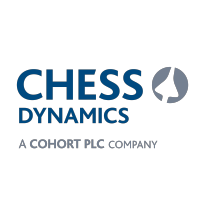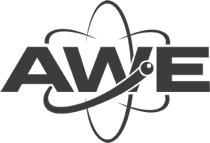Global Antiemetics Technologies and Markets, 2023 - Vestibular Disorders, The Emergence of Advanced Therapies & Patent Expiry
DUBLIN, July 23, 2018 /PRNewswire/ --
The "Antiemetics: Technologies and Global Markets" report has been added to ResearchAndMarkets.com's offering.
http://mma.prnewswire.com/media/539438/Research_and_Markets_Logo.jpg
The analysis highlights current and future market potential for antiemetic drug and presents a detailed review of pipeline drugs, blockbuster drugs, and challenges to market growth.
Emesis is a devastating adverse effect of surgery, poisoning, chemotherapy, vestibular imbalance, medication, radiotherapy and during pregnancy. Emesis itself is not a disease but an indication of a stressed physiological condition. During the last decades, extraordinary technological advances have made innovations in most of the disease therapies, including cancer therapies, which is the most common cause of emesis.
The antiemetic drug market is population driven and mostly depends on the number of chemotherapy and radiation therapy sessions performed in specific geographic regions that have high cancer burden and utilize chemotherapy and radiation therapy for cancer treatment. Antiemetics are used to suppress nausea and vomiting associated with CINV, PINV, NVP, RINV, motion sickness and vestibular sickness. 5-HT3 receptor antagonists and NK1 receptor antagonists are the most frequently used antiemetic drug categories.
The 5-HT3 receptor antagonist market accounts for the largest market share of the global antiemetic market. NK1 receptor antagonists are the second largest antiemetic drug segment. Food and Drug Administration(FDA), the commercial launch of new drug candidates, and the existing pipeline which is likely to hit the market in by 2023. Anticholinergics and benzodiazepines are the smallest antiemetic market segments, accounting for approximately REDACTED of the overall market share.
North America is the leading contributor to the antiemetic drug market. The Middle East and Africa antiemetic market are expected to grow at the highest rate during the forecast period.
Key Topics Covered:
1 Introduction
-- Antiemetic Technologies
-- Study Goals and Objectives
-- Reasons for Doing This Study
-- Scope of Report
-- Information Sources
-- Methodology
-- Geographic Breakdown
-- Analyst's Credentials
-- Related Reports
2 Summary and Highlights
3 Overview
-- Introduction
-- Causes of Nausea and Vomiting
-- Gastrointestinal Obstruction/Infection/Inflammation
-- Drug-Induced Nausea and Vomiting
-- Pregnancy-Induced Nausea and Vomiting
-- Post-operative Nausea and Vomiting
-- Vestibular Disorder
-- Pathophysiology of Nausea and Vomiting
-- Gastrointestinal Tract
-- Chemoreceptor Trigger Zone
-- Vestibular Apparatus
-- Cerebral Cortex
4 Market and Technology Background
-- Drivers
-- Global Increase in Number of Pregnancies and Burden of Underlying
Disease Conditions
-- Increasing in Research Grants and Funding
-- Growing Research Activity in Innovative Antiemetic Drug Therapy
-- Use of Novel Drug Deliveries to Treat Nausea and Vomiting
-- Restraints
-- Lack of Animal Models to Prove Efficacy of Antiemetics
-- Pricing Pressure Experienced by Innovators
-- Availability of Alternative Treatments
-- Opportunities
-- Disease Burden and Increasing Number of Pregnancies in Europe and
Asia-Pacific
-- Vestibular Disorders
-- The emergence of Advanced Therapies
-- Patent Expiry
5 Market Breakdown by Drug Class
-- Introduction
-- Global Antiemetic Drugs Market
-- 5-HT3 Receptor Antagonists
-- NK1 Receptor Antagonist
-- Dopamine Antagonists
-- Antihistamines (H1 Receptor Antagonists)
-- Cannabinoids
-- Benzodiazepines
-- Corticosteroids
-- Anticholinergics
6 Market Breakdown by Application
-- Overview
-- Market Size and Forecast
-- Chemotherapy-Induced Nausea and Vomiting
-- Introduction
-- Market Size and Forecast
-- Key CINV Market Takeaways
-- Gastroenteritis
-- Market Size and Forecast
-- Nausea and Vomiting of Pregnancy (NVP)
-- Market Size and Forecast
-- Post-Operative Nausea and Vomiting
-- Market Size and Forecast
7 Market Breakdown by Region
-- Overview
-- Market Size and Forecast
-- North America
-- Market Size and Forecast
-- United States
-- Canada
-- Mexico
-- Europe
-- Market Size and Forecast
-- United Kingdom
-- Germany
-- Asia-Pacific
-- Market Size and Forecast
-- The Middle East and Africa
-- South America
8 Patent Review/New Developments
-- Introduction
9 Pipeline Analysis
-- Introduction
-- NK1 Receptor Antagonists
10 Regulatory Landscape
-- Introduction
-- Regional Regulatory Landscape
-- North America
-- Europe
-- Asia-Pacific
11 Company Profiles
-- Abbott Laboratories
-- Aphios Corp.
-- Astellas Pharma Inc.
-- Aurobindo Pharma
-- Daiichi Sankyo Company Ltd.
-- Eisai Co., Inc.
-- F. Hoffmann-La Roche Ag
-- Glaxosmithkline Plc
-- Helsinn Healthcare Sa
-- Heron Therapeutics, Inc.
-- IPCA Laboratories, Ltd.
-- Kyowa Hakko Kirin Pharma, Inc.
-- Merck & Co., Inc.
-- Novartis Ag
-- Sanofi Aventis
-- Tesaro, Inc.
-- Teva Pharmaceutical Industries Ltd.
For more information about this report visit https://www.researchandmarkets.com/research/5ssm48/global?w=5
Media Contact:
Research and Markets
Laura Wood, Senior Manager
press@researchandmarkets.com
For E.S.T Office Hours Call +1-917-300-0470
For U.S./CAN Toll Free Call +1-800-526-8630
For GMT Office Hours Call +353-1-416-8900
U.S. Fax: 646-607-1907
Fax (outside U.S.): +353-1-481-1716
View original content:http://www.prnewswire.com/news-releases/global-antiemetics-technologies-and-markets-2023---vestibular-disorders-the-emergence-of-advanced-therapies--patent-expiry-300684706.html
SOURCE Research and Markets



